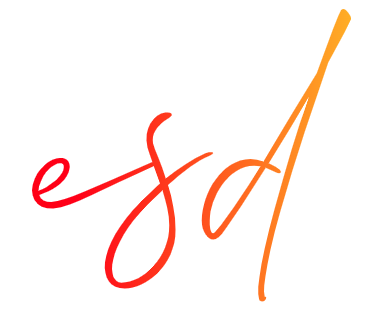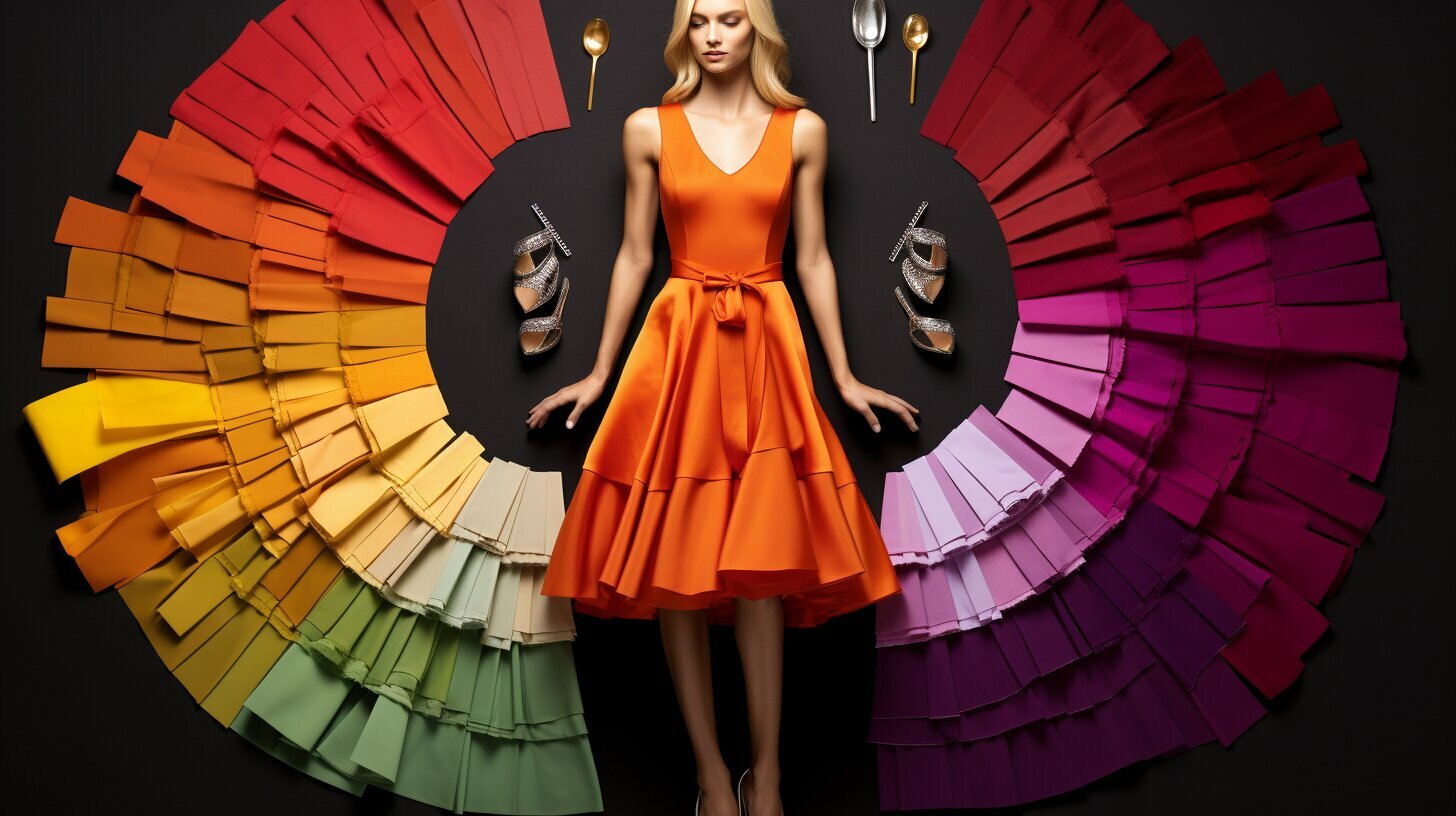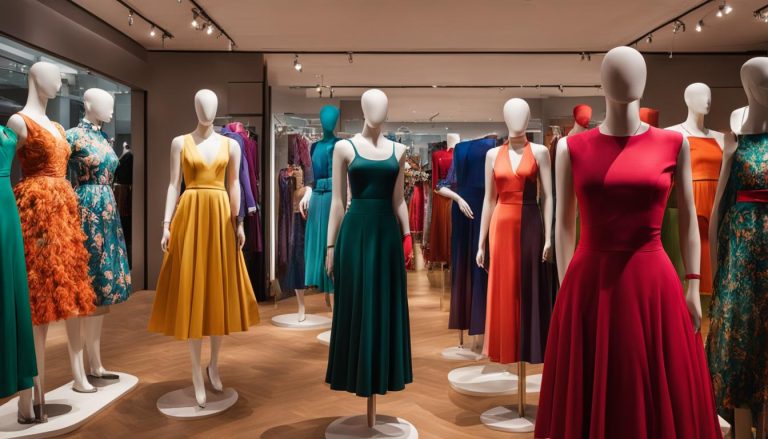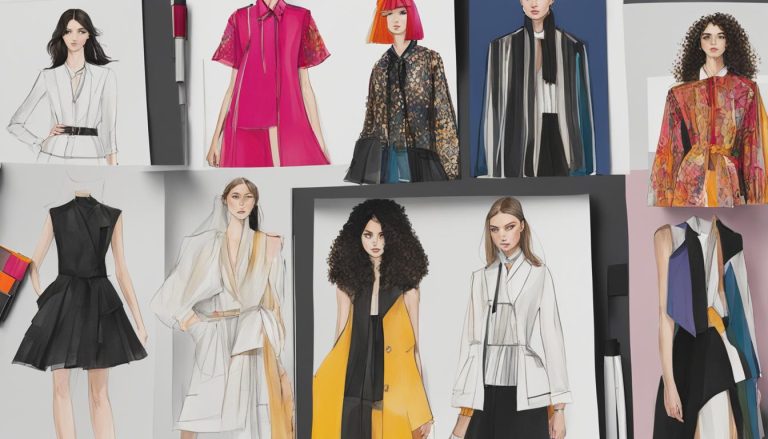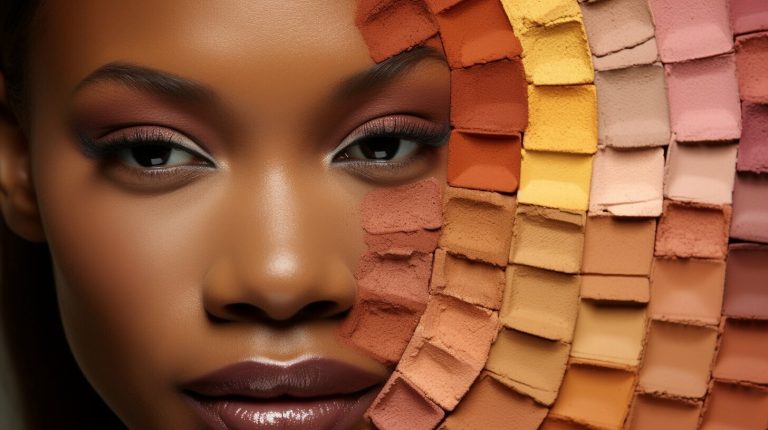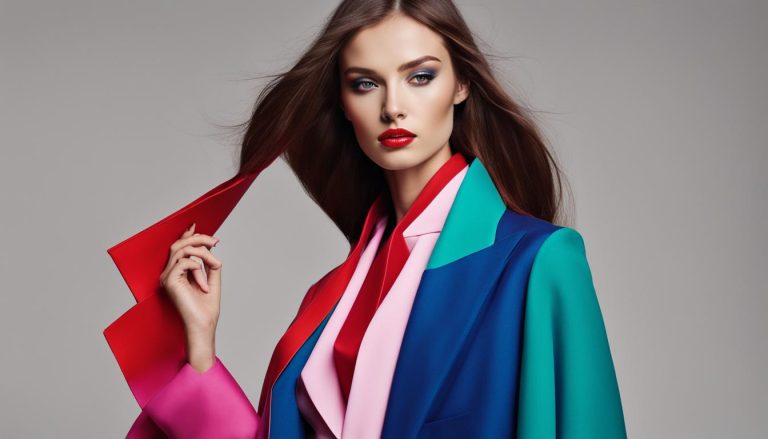Colour Theory in Fashion: Your Complete Guide
If you’re looking to take your fashion design process to the next level, understanding colour theory is a must. From choosing complementary colours to projecting the right mood, colour plays a crucial role in elevating your fashion choices. In this comprehensive guide, we’ll provide you with all the information you need to master colour theory in fashion and transform your wardrobe.
The Basics of Colour Theory
Understanding how color works in fashion is the key to unlocking your style potential. At the core of color theory is the fashion color wheel, which provides a visual guide for selecting colors that work harmoniously together. There are three primary colors: red, blue, and yellow. When mixed together, they create secondary colors: green, orange, and purple. And when mixed further, tertiary colors are formed, such as blue-green or red-orange. This is the foundation of the fashion color wheel.
Colors can also be categorized as warm or cool, with warm colors like red, orange, and yellow conveying energy and vibrancy, while cool colors like blue, green, and purple evoke calmness and tranquility. Understanding the significance of different colors and their meanings is crucial in fashion. For example, red is often associated with passion and excitement, while pink conveys femininity and romanticism. Blue is a popular color in corporate settings, as it communicates trust and reliability.
By utilizing the fashion color wheel and understanding the significance of different colors in fashion, you can create cohesive and balanced outfits that enhance your style and personality.
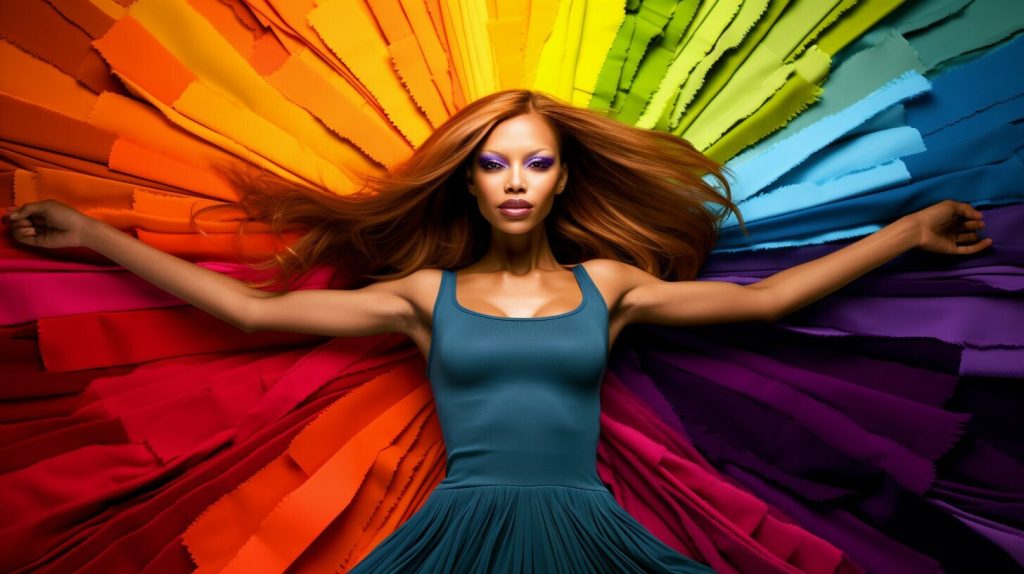
In addition to the color wheel, it’s important to understand color schemes. A color scheme is a predetermined set of colors that work well together. Some popular color schemes include monochromatic (using different shades and tones of a single color), complementary (pairing colors that are opposite each other on the color wheel), and analogous (using colors that are next to each other on the color wheel). By mastering color schemes, you can take your fashion game to the next level and create outfits that are visually stunning and cohesive.
Mixing and Matching Hues
Now that you have learned about the basics of color theory, it’s time to explore the art of mixing and matching hues. Creating a fashion color palette and understanding fashion color schemes is crucial to develop harmonious outfits that look put-together and stylish.
The first step in mixing and matching hues is to identify the colors that work best for your skin tone, hair color, and personal style. If you have warm undertones, you’ll look best in earthy colors like browns, oranges, and yellows. In contrast, cool undertones will make you shine in blues, purples, and greens. Neutral undertones offer a wide range of options and can usually wear any color.
Once you have determined your ideal color palette, it’s time to explore different fashion color schemes. Monochromatic looks, which utilize different shades and tones of the same color, offer a sleek and polished look. Analogous colors, which are adjacent on the color wheel, provide a harmonious and subtle effect. Complementary colors, which are opposite on the color wheel, offer a striking contrast that is sure to turn heads.
When creating a fashion color palette, don’t be afraid to experiment with different hues and tones. Play around with different combinations to find the ones that work best for you. Remember, color is a powerful tool that can transform the way you look and feel. So, don’t be afraid to embrace bold and vibrant colors.
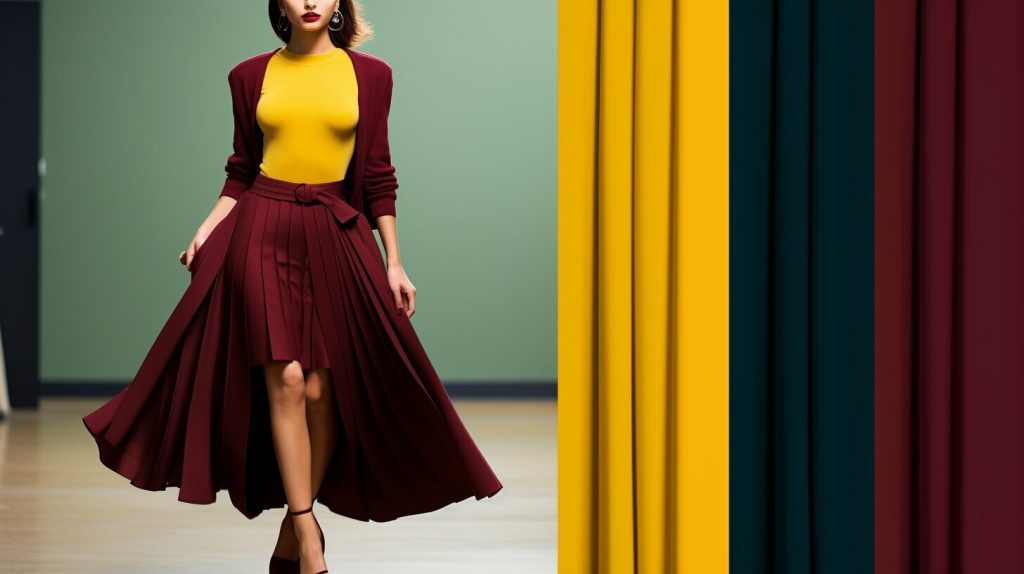
“Color can evoke emotions and spark creativity, making it an essential tool in the world of fashion.”
By mastering the art of mixing and matching hues, you can create outfits that reflect your unique personality and sense of style. Whether you opt for subtle monochromatic looks or bold complementary color schemes, the possibilities are endless. So, have fun experimenting with different fashion color palettes and schemes, and discover the ones that make you feel confident and stylish.
The Psychology of Color in Fashion
Colors are not only pleasing to the eye, but they also impact our moods, emotions, and perceptions. Understanding color psychology can help you make fashion choices that not only look good but also feel good.
In fashion and color psychology, each color carries its own connotation. For example, red is often associated with passion and energy, while blue is associated with calmness and serenity. Understanding the meanings of different colors can help you choose outfits that convey the message you want to send.
Moreover, color can also affect how we perceive ourselves and others. Wearing black, for example, can make you appear more stylish and sophisticated, while wearing pastel colors can make you appear more approachable and friendly.
When it comes to choosing colors for your outfits, it’s essential to consider the occasion and context. For a job interview, you may want to opt for more subdued colors, such as navy or gray, to convey a sense of professionalism. On the other hand, for a party or social event, you may want to choose brighter, more vibrant colors to express your personality and energy.
So, the next time you’re putting together an outfit, think not only about what looks good but also about what message you want to convey. Your understanding of color psychology can help you make choices that elevate your style and make a statement.
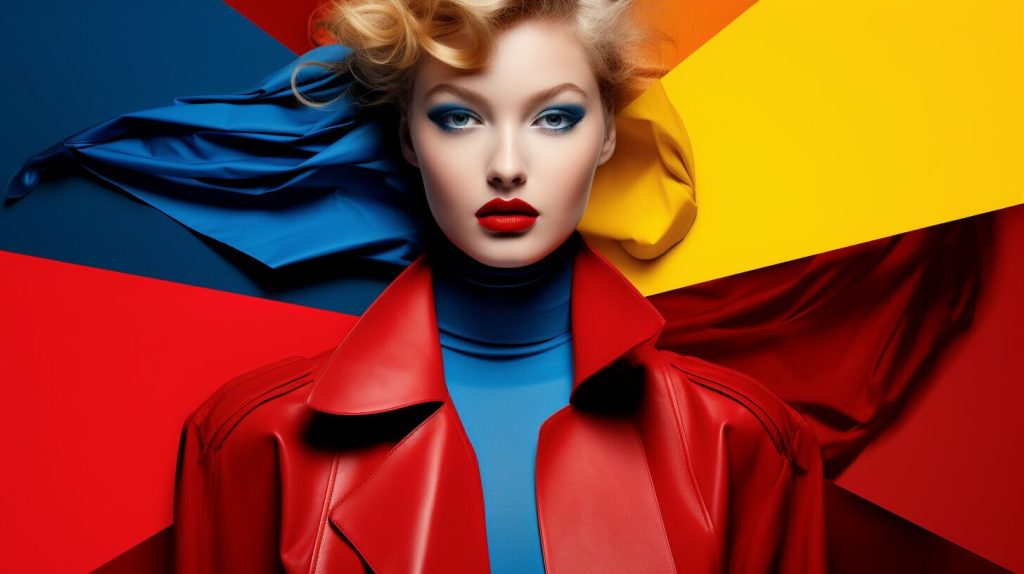
The significance of color in fashion trends cannot be understated. Each season, fashion designers release their latest collections, often featuring new color palettes and combinations. These trends can impact the fashion industry as a whole, influencing the styles and colors we see in stores and on the streets.
Moreover, color trends can also be reflective of larger cultural and societal shifts. For example, the recent trend towards sustainable fashion has led to a rise in earthy tones and natural colors. Understanding fashion color trends can help you stay ahead of the curve and make fashion choices that are both stylish and socially conscious.
Overall, the psychology of color in fashion is a complex and fascinating topic. By understanding how color impacts our emotions, perceptions, and expressions, you can make fashion choices that not only look good but also feel good. So, embrace the power of color and explore the endless possibilities it offers for your wardrobe.
The Power of Fashion Color Trends
Staying on top of fashion color trends is essential if you want to create outfits that are current and fashion-forward. The fashion industry is constantly evolving, and keeping up with the latest color trends will help you make a statement with your wardrobe.
Understanding color in fashion is crucial, and incorporating the latest color trends into your wardrobe can help you stay ahead of the fashion curve. In recent years, we’ve seen trends such as bold and bright colors, pastels, and earthy tones.
Designers often incorporate the latest color trends into their collections, and by paying attention to their work, you can get a sense of what’s currently popular. Keep an eye on fashion shows and designer lookbooks to stay up-to-date with the latest trends.
When it comes to incorporating fashion color trends into your wardrobe, the key is to do so in a way that works with your personal style. Don’t feel obligated to wear a color just because it’s on-trend; instead, find ways to incorporate it into outfits that reflect your unique fashion sense.
Whether you choose to embrace the latest fashion color trends or stick to timeless classics, understanding color in fashion is essential for elevating your style choices. Experiment with different color combinations, stay up-to-date with fashion color trends, and unleash the power of color to transform your wardrobe.
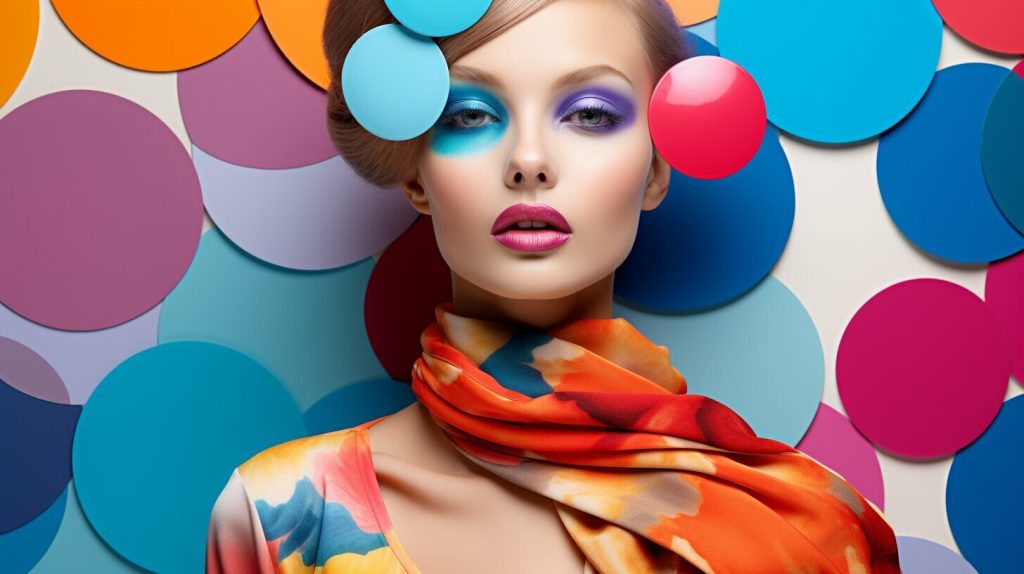
Building a Versatile Colour Palette
Creating a versatile color palette is an essential part of mastering color theory for fashion design. Your color choices can make or break your outfit, so it’s important to choose colors that complement your skin tone, hair color, and personal style.
Start by selecting a few neutral colors as the foundation of your wardrobe. These can include black, white, beige, and gray. Neutral colors pair well with almost any other color and can be used as a base color for any outfit.
Next, choose a few accent colors that you love and that complement your skin tone. These can be bold, bright colors or muted shades. Look for colors that make you feel confident and reflect your personality.
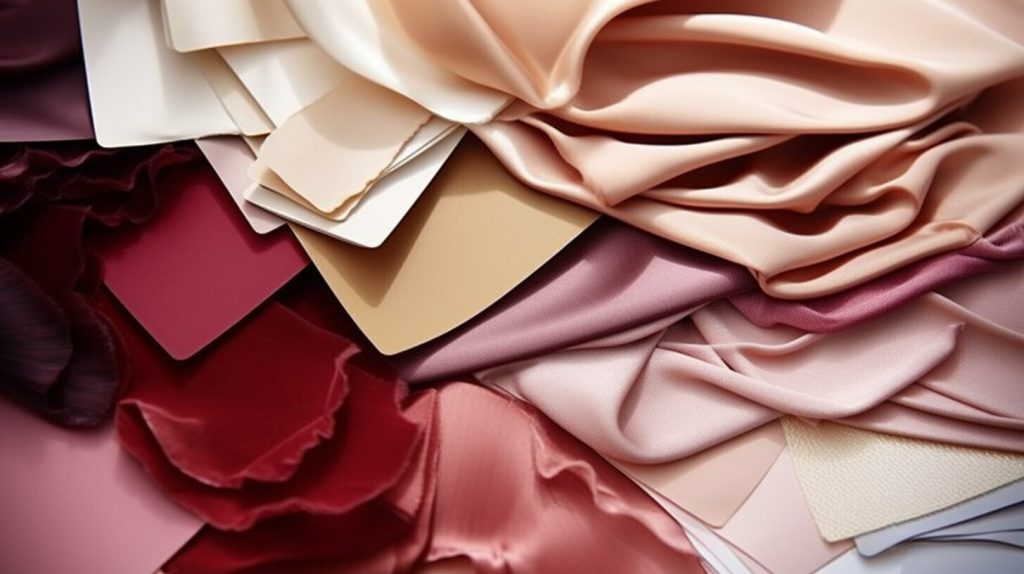
Once you have your foundational and accent colors, play around with different color combinations to create stunning color schemes. Consider using complementary colors, which are opposites on the color wheel and create an eye-catching contrast, or analogous colors, which are next to each other on the color wheel and create a harmonious blend.
Remember to keep your color palette versatile by choosing colors that work well together and can be mixed and matched to create a variety of outfits. By mastering color theory and building a versatile color palette, you’ll be able to elevate your fashion game and create outfits that make a statement.
Creating Impact with Colour Contrast
When it comes to creating visually interesting outfits, colour contrast can be a powerful tool. By combining colours that sit opposite each other on the colour wheel, you can create striking and impactful looks that demand attention.
There are several types of colour contrasts to consider:
| Type of Contrast | Description |
|---|---|
| Complementary contrast | Combining colours that are opposite each other on the colour wheel, like red and green or blue and orange. |
| Analogous contrast | Combining colours that sit next to each other on the colour wheel, like green and yellow or red and orange. |
| Triadic contrast | Combining three colours that are equidistant from each other on the colour wheel, like purple, yellow, and red. |
When using colour contrast in your outfits, consider using one colour as the dominant shade and the others as accents. For example, you could pair a bright red top with navy blue pants and yellow shoes, allowing the red to stand out as the focal point.
Remember, colour contrast can be a bold move, so don’t be afraid to experiment and find what works for you.

“As a designer, I love using colour contrast to create interesting and dynamic looks. It’s all about finding the right balance and not being afraid to take risks. Combining unexpected colours can lead to amazing results that can truly make a statement.”
The Role of Colour in Different Fashion Styles
Colour plays a vital role in defining various fashion aesthetics. Understanding colour theory in clothing can give you an edge in creating outfits that perfectly align with your sense of style.
Minimalistic Monochromes
Minimalistic style emphasizes simplicity and elegance, utilizing monochromatic colors like black, white, and gray. The lack of color variations creates a dramatic effect, highlighting the beauty in simplicity. However, subtle changes in shades and textures can elevate the look while retaining the minimalistic aesthetic.
Vibrant Prints
Prints add personality to your clothing and are perfect for creating eye-catching outfits. Mix and match prints that have complementary color schemes. Bold and contrasting colours create a powerful statement, while pastel and muted colors convey a softer and relaxed vibe.
Boho-Chic Earth Tones
Boho-chic style often incorporates earthy and muted colors like brown, beige, and olive green. These colors are inspired by nature and bring a sense of calm to the outfit. Layering different textures like lace, crochet, and suede can add depth to your boho-chic look, creating a unique and individualistic outfit.
Sophisticated Neutrals
Sophisticated or classic style focuses on timeless pieces that can be worn for years. Neutral colors such as navy, cream, and camel are staple shades in creating a classic and elegant look. These colors are versatile and complement each other, allowing for easy mixing and matching. Add a pop of color to this style with a bold accessory or a colorful pair of shoes.
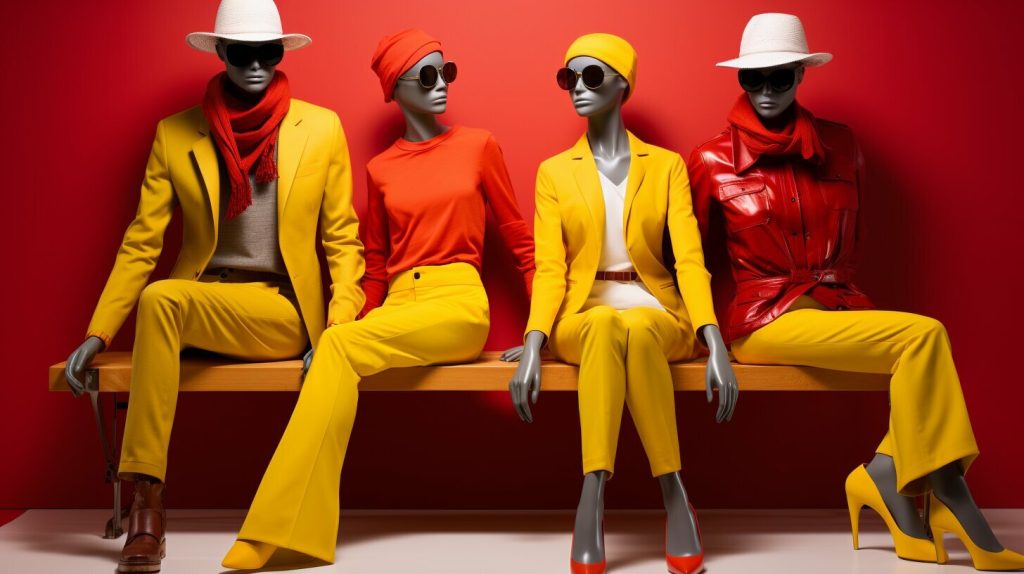
Each fashion style is unique, and understanding which colors work best with each style can create a more effortless and effective way to elevate your fashion choices.
Color theory is a powerful tool that you can use to unlock your fashion potential. Discover the colors that suit your personality and fashion sense, and use them to create outfits that make a statement. Remember that fashion is a form of self-expression, and there are no rules when it comes to creating your unique style.
Hiring a Freelance Fashion Designer
If you’re ready to take your fashion game to the next level, consider hiring a freelance fashion designer. These professionals are experts in color theory and fashion psychology, and can help you create personalized, fashion-forward looks that reflect your individual style and personality.
Working with a freelance fashion designer can save you time and money in the long run. They can help you avoid costly fashion mistakes and guide you in creating a versatile fashion color palette that maximizes outfit possibilities. They can also provide valuable insight into the latest fashion color trends and how to incorporate them into your wardrobe.
Remember, your wardrobe is an extension of your personal brand and style. Hiring a freelance fashion designer can help you make a powerful statement with your fashion choices and unlock your full designer potential.
If you are looking for support of direction on your upcoming collection feel free to contact me for a FREE consultation call.
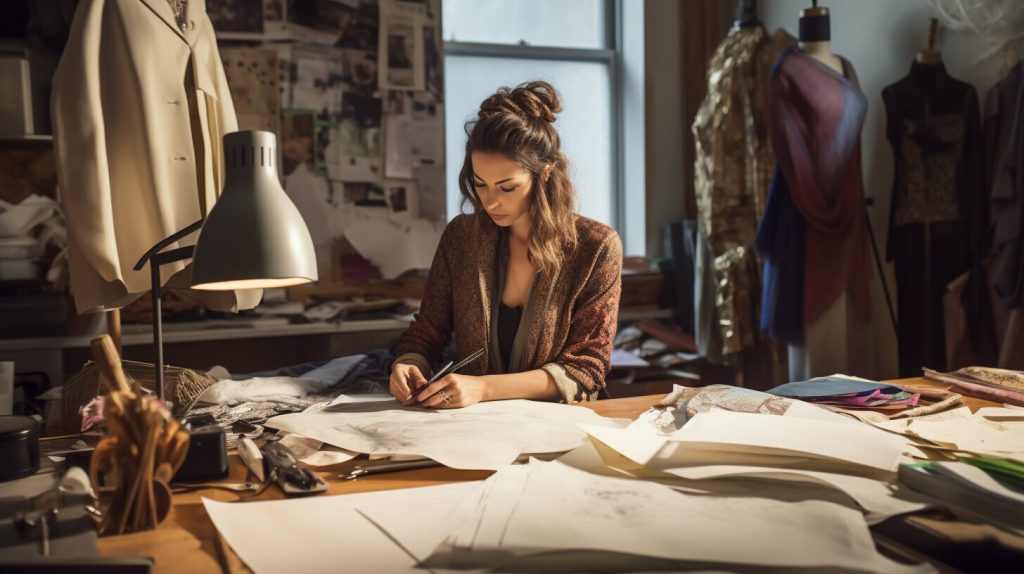
“Working with a freelance fashion designer can save you time and money in the long run.”
Unlocking Your Style Potential
Now that you have familiarized yourself with the basics of color theory, it’s time to put your knowledge into practice and unlock your style potential. Remember, color plays a significant role in creating a cohesive and polished outfit, so don’t be afraid to experiment with different combinations to find what works best for you.
One useful tool to have on hand is the fashion color wheel. Use it to identify complementary colors and create harmonious color schemes. You can also stay up-to-date with the latest fashion color trends to incorporate fresh and trendy hues into your wardrobe.
Creating a versatile fashion color palette is also essential. Choose colors that flatter your skin tone and complement your personal style. Keep in mind the principles of color harmony and aim to incorporate different shades and tones to add depth and interest to your outfits.
Remember, fashion is all about self-expression. Don’t be afraid to play with color contrast to create daring and impactful looks. And if you’re struggling to find the right combination, consider hiring a freelance fashion designer who can help you unlock your style potential and elevate your fashion game.
Creating Your Fashion Color Palette
To maximize your outfit options, consider building a versatile fashion color palette. Use the color wheel to choose hues that complement each other and your personal style. Keep in mind your skin tone and hair color when selecting colors to ensure they enhance your natural features.
Remember to also consider the principles of color harmony when creating your fashion color palette. Choosing colors that harmonize with each other can create a cohesive and balanced look.
With these tips and tricks, you can take your fashion sense to the next level. Whether you’re looking to add a touch of sophistication or make a bold statement, the power of color is at your fingertips. Start enhancing your wardrobe today with these insights and unlock your style potential.
FAQ
Q: What is colour theory in fashion?
A: Colour theory in fashion is the understanding and application of how different colors can harmonize, create contrast, and convey emotions in clothing and accessories.
Q: How can mastering colour theory enhance my style choices?
A: By understanding colour theory, you can make informed decisions about color combinations that flatter your skin tone, hair color, and personal style, resulting in more cohesive and impactful outfits.
Q: What is the fashion color wheel?
A: The fashion color wheel is a tool that organizes colors in a circular format, helping you understand color relationships and create harmonious outfits. It consists of primary, secondary, and tertiary colors.
Q: How can I mix and match hues effectively?
A: To mix and match hues effectively, consider creating a fashion color palette that includes complementary, analogous, or monochromatic colors. Experiment with different color schemes to create visually appealing outfits.
Q: How does color psychology impact fashion?
A: Color psychology explores the psychological effects that different colors have on individuals. In fashion, understanding color psychology helps you convey specific emotions or messages through your clothing choices.
Q: What are some current fashion color trends to watch out for?
A: Fashion color trends change seasonally. Stay updated with fashion magazines, runway shows, and online resources to discover the latest color trends that fashion designers are incorporating into their collections.
Q: How do I build a versatile color palette for my wardrobe?
A: Building a versatile color palette involves choosing colors that work well together and complement your skin tone and hair color. Consider incorporating neutral shades and a few statement hues that reflect your personal style.
Q: How can I create impact with color contrast in my outfits?
A: Color contrast adds visual interest to your outfits. Experiment with different types of color contrasts, such as complementary or triadic, to create bold and eye-catching ensembles.
Q: How does color play a role in different fashion styles?
A: Color plays a significant role in defining various fashion aesthetics. For example, minimalistic styles often employ monochromatic color schemes, while vibrant prints embrace a range of hues to create bold and eclectic looks.
Q: When should I consider hiring a freelance fashion designer?
A: Hiring a freelance fashion designer can be beneficial if you want personalized fashion advice, assistance with creating custom pieces, or guidance in incorporating color theory and psychology into your wardrobe.
Q: How can I unlock my style potential with color theory?
A: Use your newfound knowledge of color theory to experiment with different color combinations, embrace current fashion color trends, and confidently express your unique personality and fashion sense through your clothing choices.
Q: How can I enhance my wardrobe using the insights from this guide?
A: Take the insights from this guide and apply them to your wardrobe by experimenting with different color schemes, staying updated with fashion color trends, and embracing the transformative power of color in your fashion choices.
